GreenEnergy
Latest

Sony vows to use 100 percent renewable electricity by 2040
Sony is the latest tech giant pledging to power its worldwide operations with 100 percent renewable energy. All of its 111 global business sites -- which produce everything from games consoles and semiconductors to Hollywood blockbusters -- will go green by 2040, says the company. Of course, that deadline is decades away, so in the interim it plans to reach at least 30 percent by 2030.
Saqib Shah09.11.2018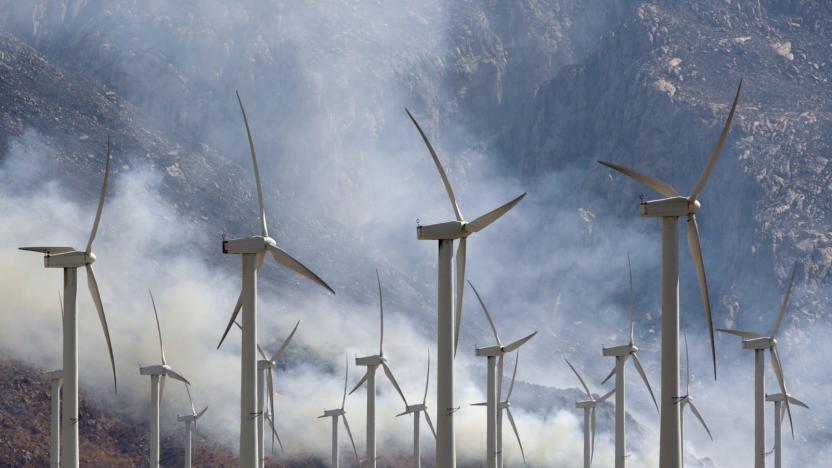
California lawmakers pass bill to phase out fossil fuels by 2045
Lawmakers in California have strengthened the state's commitment to clean energy by passing a bill to stop using fossil fuels entirely by 2045. The legislature passed S.B. 100 by 43 votes to 32, making California the second state to take such a step, following Hawaii. The bill now moves to a procedural vote in the Senate, and then to Governor Jerry Brown to sign it into law. Around 72 percent of the state's residents were in support of the move, according to polls cited by CBS.
Kris Holt08.30.2018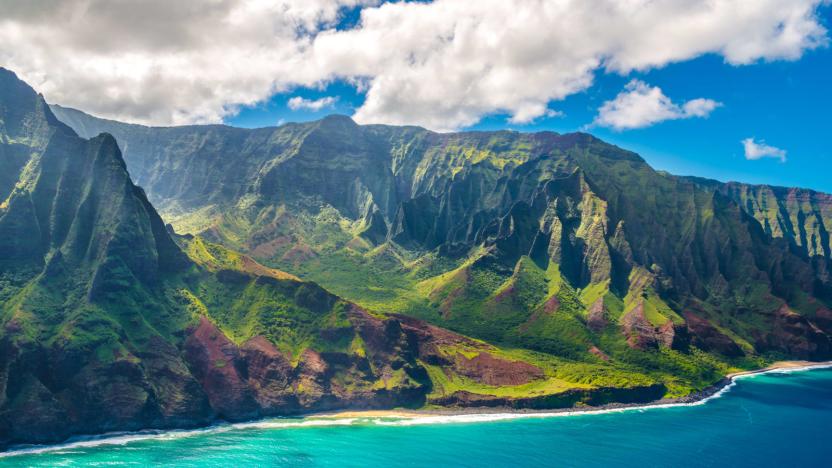
Tesla Powerwall systems help some Hawaii schools beat the heat
Tesla shipped Powerwall batteries to Puerto Rico last fall -- and to Australia last December -- and now it's helping Hawaii. Again. Specifically, it supplied equipment to the island state to help schools combat Hawaii's tropical temperature and relative humidity. Roadshow reports that Tesla shipped some 300 batteries and solar panels to the island as a way of keeping schools cool using renewable energy. This was after state government challenged the local department of education to cool an additional 1,000 classrooms without bumping electricity usage.
Timothy J. Seppala02.26.2018
After Math: Merry Christmas, you filthy animals
It's been a wondrous week working up to Christmas Eve and not just for the guys with the Tommy Guns. Alamo Drafthouse announced it is starting a rental store and loaning out rare VHS, Protera is going to wake up tomorrow with an order for 25 of its electric buses under the tree, and Google is practically giving away its digital movie rentals. Numbers, because how else will you know how many gold rings you've got coming?
Andrew Tarantola12.24.2017
What is the future of Puerto Rico’s energy grid?
Delivering power to the inhabitants of a small island is a very different challenge to the sort found in other places. Resource poverty can mean that vital supplies need to be brought in, either by air or sea, purchased at a premium. The environment often offers its own bundle of problems, including the fact that the prevalence of salt water often corrodes mechanical equipment. Fast-growing vegetation and rocky terrain can compound the issue, making power networks hard to build and maintain.
Daniel Cooper10.23.2017
Solar power is the fastest growing source of global energy
Solar power was the fastest-growing source of global energy last year, overtaking growth from all other forms, according to the International Energy Agency (IEA). The spurt is largely attributed to lower prices and changing government policies encouraging a shift away from traditional power sources, such as coal. China, for example, has played an important role in renewable energy's prominence, accounting for almost half of all new solar panels installed worldwide.
Rachel England10.04.2017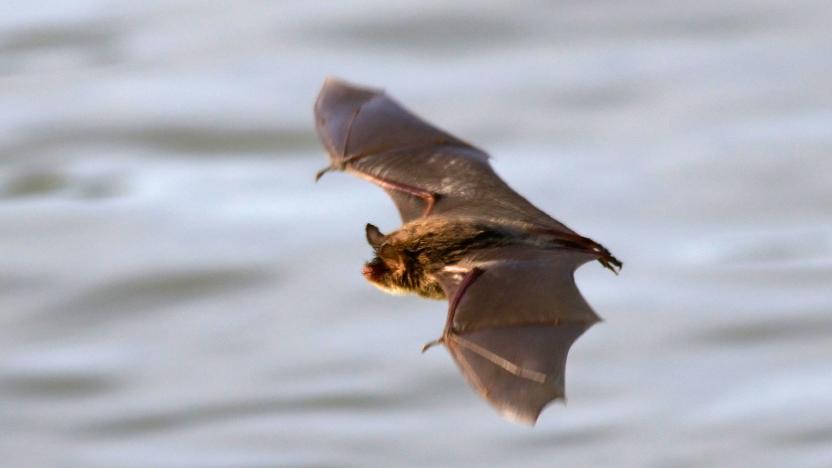
Saving bats from wind turbines is easy
Renewable energy like wind power is touted as a great way to reduce our impact on the environment. Tech companies like Google and Tesla, along with cities like San Francisco, understand the need to go green. Still, even renewable sources of energy can have hidden effects on local animal populations. The world's largest solar power plant, in fact, kills thousands of birds annually at its Ivanpah, California site. A new study in Sweden found that the country's wind turbines kill tens of thousands of bats annually -- an average of 10 to 15 bats per turbine. The answer? Halt the spinning of the fans during the summer evenings when wind is low anyway.
Rob LeFebvre05.10.2017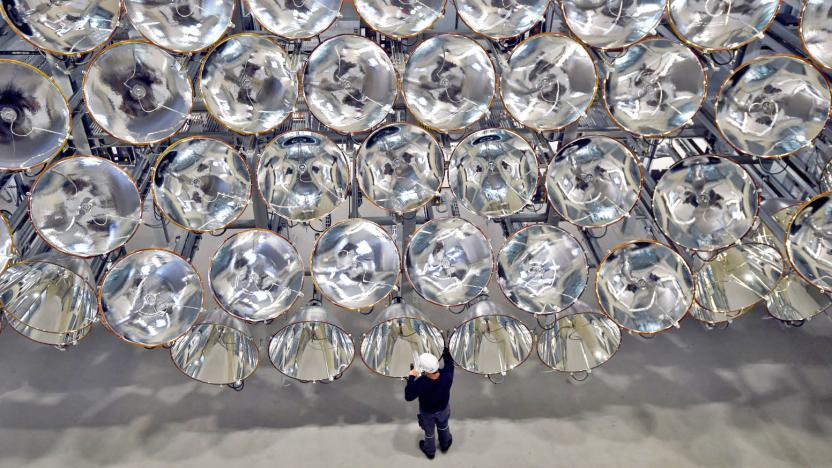
German researchers built a molecule-splitting artificial sun
Scientists from the German Aerospace Center (DLR) are testing a novel way to generate hydrogen, a potential green energy source, by using a massive array of lights normally found in movie theaters.
Andrew Tarantola03.23.2017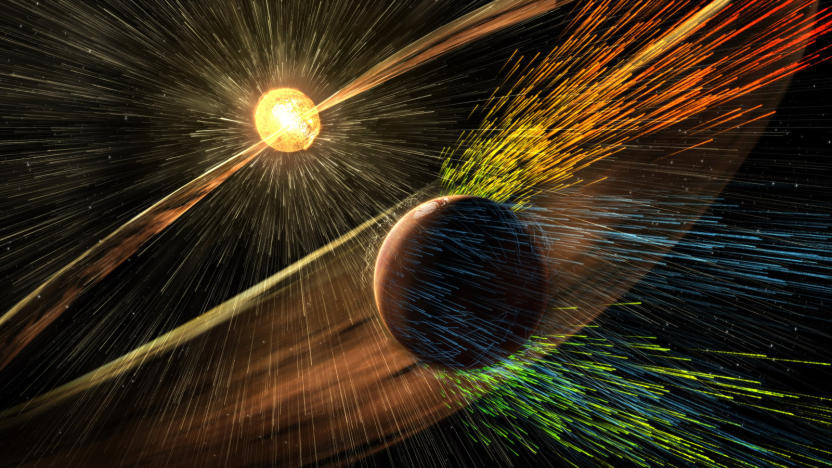
After Math: Keep pace in the space race
It's been a productive week for those of us trying to get the hell off this crazy planet. NASA showed off a radiation-proof flight vest for interplanetary astronauts while Blue Origin debuted its latest rocket engine and previewed its upcoming New Glenn spacecraft. We also take a look at a solar farm visible from the ISS and examine just how badly the Trump regime is gutting NASA's Earth Science programs. Numbers, because how else will we know when it's time to blast off?
Andrew Tarantola03.12.2017
Half of UK electricity now comes from nuclear and renewables
A record 50 percent of the UK's electricity was generated from renewables and other low carbon energy sources in the third quarter of 2016. That's up from 45.3 percent the year prior, a milestone fuelled by a sizeable increase in wind, solar and nuclear energy. A neat quarter came from renewables, including hydroelectric, while the other 25 percent was sourced from nuclear reactors. According to the UK government, the growth in green energy can be attributed, at least in part, to "improved weather conditions" across the UK, including higher wind speeds, increased rainfall and longer stretches of sunlight (though I don't remember that last one happening).
Nick Summers12.23.2016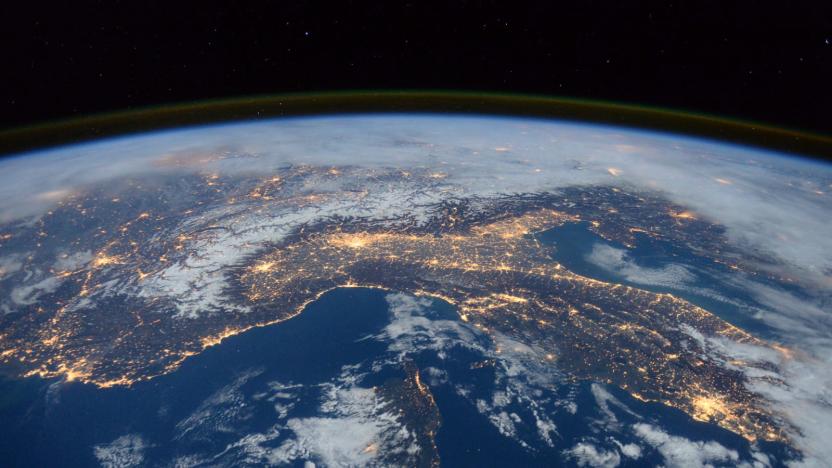
Americans divided on how much to spend to battle climate change
It's going to take a lot of money (among many other things) to help combat climate change, and one of the challenges there has been getting citizens to pay for it. But a new survey from Energy Policy Institute at the University of Chicago and The Associated Press-NORC Center for Public Affairs Research indicates some Americans may be warming to the idea. While the data gathered shows that a whopping 42 percent of people wouldn't even pay $1 a month on their energy bill to reduce greenhouse gas emissions, those who were willing to pay might put up some decent cash.
Nathan Ingraham09.15.2016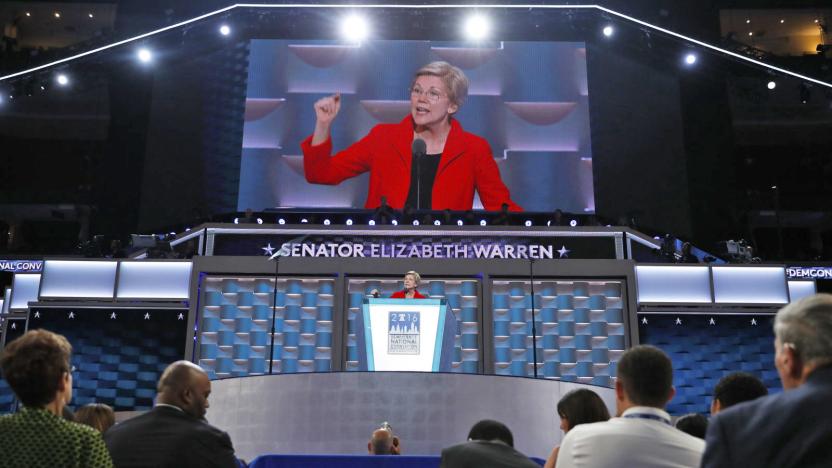
Democrats ask for immediate action to combat climate change
The Democrats and Republicans differ on many fronts, but the contrast is particularly striking when it comes to climate change. The Republican party platform dismisses it and its presidential candidate calls it a "hoax." But on Monday night as the 2016 Democratic National Convention began, multiple speakers including Senators Bernie Sanders (D, VT) and Elizabeth Warren (D, MA) touched on the need to directly address the issue. Similarly, the party's 2016 platform document spends many pages touching upon climate change, calling it an "urgent threat and a defining challenge of our time.
Nathan Ingraham07.27.2016
Harvard's battery tech takes cues from vitamin B2
A team of Harvard scientists on a quest to find an organic molecule that can be used to make non-toxic, low cost flow batteries found their answer in vitamin B2. By making just a couple of tweaks to riboflavin's original molecule, which converts carbs to fuel in our bodies, they were able to design one that can be used to store energy harnessed by solar and wind sources. The same team previously worked on a battery that uses a type of organic molecule called quinones and ferrocyanide (a food additive) instead of typical electrolyte. They decided to find other molecules that could lead to a version with better capacity, however, and were inspired by B2's capabilities.
Mariella Moon07.19.2016
Apple will turn landfill gas into sweet electricity
Apple has been given permission by North Carolina to build a facility that uses the methane emitted from landfill waste to create electricity. The plant, which will be based in Catawba County, will stand for 16 years, with the option of a five-year extension should the parties agree. As 9to5Mac explains, it's an energy method that both generates power from waste and prevents the release of methane into the atmosphere. The news comes less than a day after the firm was given permission to begin reselling energy to power companies.
Daniel Cooper06.10.2016
Google puts money into cementing green energy standards in Asia
Plenty of big tech companies are looking to source green energy whenever they can for their substantial energy needs, and Google is the same. But it looks like it's hard to find the renewable energy you're looking for in Asia -- specifically China, which is why the company says it's offering seed funding to the Center for Resource Solutions. The non-profit is going to bring its experience in setting up and running renewable energy certification programs to Asia, starting in Taiwan. That's good, because that's right where Google needs green power for its data center.
Mat Smith04.07.2016
6 high-flying clean energy generators
By Cat DiStasio Dirty fossil fuels come from the ground, but the future of energy is in the sky. Thanks to innovative engineers in the renewable energy industry, the world of high-altitude wind and solar generators is booming. Not only are these devices cleaner than fossil fuel alternatives, but they have the potential to generate more usable energy at a lower cost. High-altitude wind turbines can take advantage of faster wind speeds, and positioning solar arrays above the clouds yields better sun exposure without shadows blocking the rays.
Inhabitat03.05.2016
The After Math: With great power
Well, this week as been rather terrible. With all the death and mayhem both at home and abroad, it's enough to make anyone feel rather helpless. It's times like these that we have to force ourselves to remember there is still a great deal of good left in the world. From life-saving medical advancements and clean energy promises to superior image scanners and kick-assier video games, this week's selection shows that humanity isn't all bad (just mostly).
Andrew Tarantola12.06.2015
Elon Musk's SolarCity has the world's most efficient solar panels
SolarCity, the company co-founded by Elon Musk, now produces the world's most efficient rooftop solar panels with a module efficiency of just over 22 percent. That bests the X-Series panels built by SunPower, which top out at around 21.5 percent. The results were confirmed by the Renewable Energy Test Center, a third party California photovoltaic testing company. SolarCity CEO Lyndon Rive told Fortune that the company is shooting for a cost of around 55 cents per watt. It plans to build the 360 watt panels its 1GW solar panel plant in Buffalo, New York, set to open next year.
Steve Dent10.02.2015
Scientists are developing an invisibility cloak for solar panels
Current solar panel technology has enough trouble as it is converting sunlight into useable current, what with their paltry 20 percent average efficiencies. And it certainly doesn't help matters that up to a tenth of every solar panel's active collection areas are obscured from the sun by electrical leads called "contact fingers." But researchers at the Karlsruhe Institute of Technology (KIT) have developed a novel workaround: they're wrapping the finger contacts in little invisibility cloaks.
Andrew Tarantola10.01.2015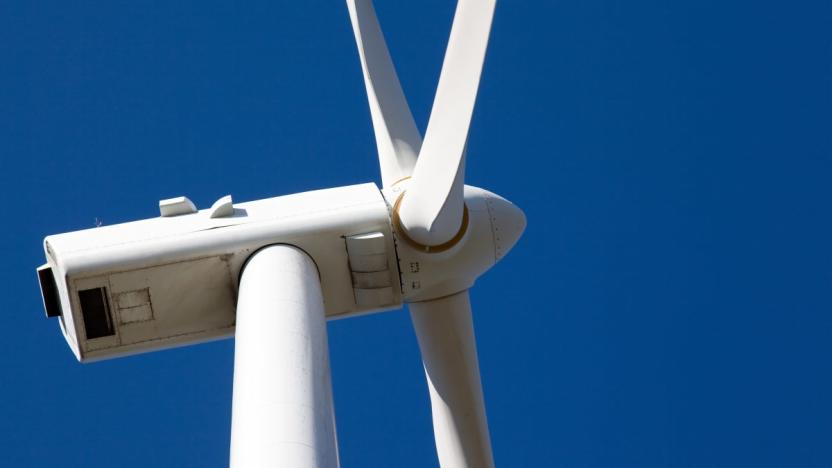
Study maps where golden eagles are safe from wind turbines
Researchers have completed a novel study that may help the wind farm industry avoid protected golden eagle habitats. Wind turbine blades reportedly kill up to 300,000 birds per year in US, which is admittedly a small percentage compared to those killed by your cat. Still, the golden eagle is particularly susceptible, considering that around 100 individuals were killed last year by a single wind farm in Altamont, California -- and there are only 500 breeding pairs in the state. The new study posits a simple idea: Why not plot both golden eagle habitats and the areas with the best wind farm potential, and make sure the areas don't intersect?
Steve Dent08.28.2015